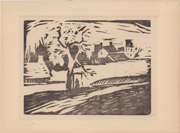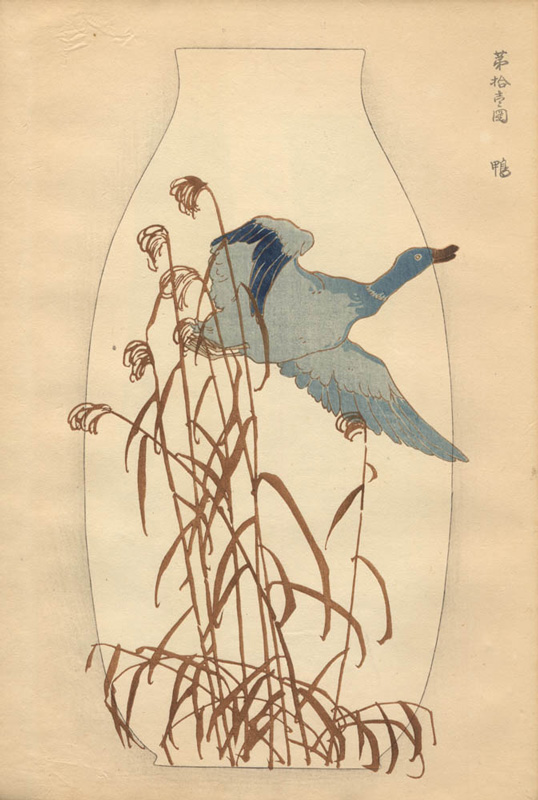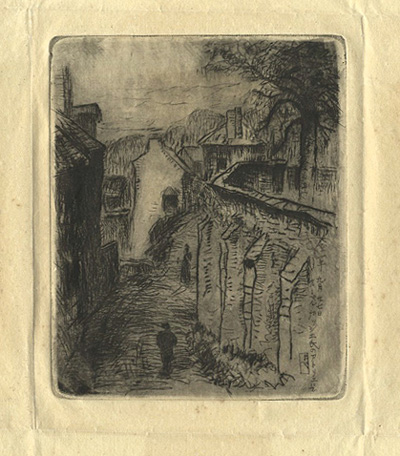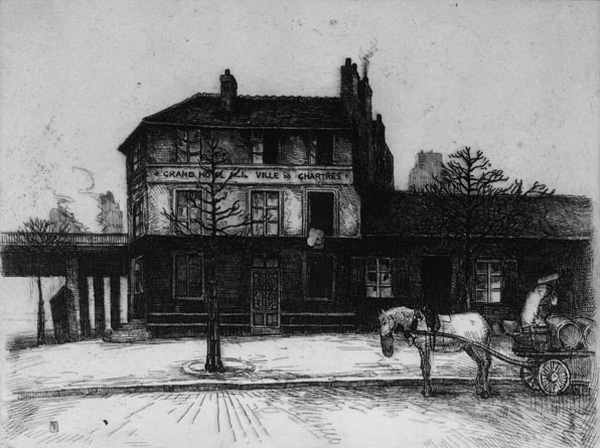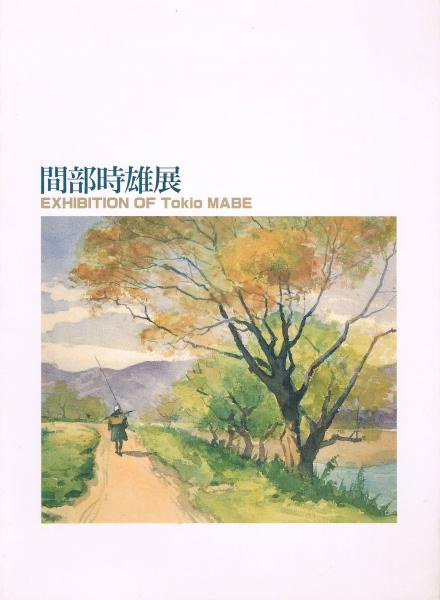Prints in Collection
Biographical Data
Biography
Mabe Tokio 間部時雄 (1885-1968)Sources: Guide to Modern Japanese Woodblock Prints: 1900-1975, Helen Merritt, University of Hawaii Press, 1992, p. 82;Toyama Museum Association "Gasche parent and child and Van Gogh, and Cezanne and Tokio" http://museums.toyamaken.jp/documents/documents009/ (in Japanese); Mie Prefectural Art Musuem http://www.bunka.pref.mie.lg.jp/art-museum/84278039746.htm (in Japanese); Who's Who in Japan, The Who's Who in Japan Office, Tokyo, 1930
Trained as a Western-style (yōga) painter, Mabe also produced watercolors and copper plate prints (etchings). While he may have created a number of woodblock prints, the only extant woodblock print I’m aware of is this collection’s 1928 print Montigny in Spring which appeared in Volume 14 of the print magazine HANGA.
Born in Kumamoto Prefecture on July 15, 1885, Tokio Mabe was the fourth son in the Yoshinori family. In 1902 he entered the newly established Kyoto Kōtō Kōgei Gakkō (the Kyoto Higher School of Arts and Crafts), where the Western-style painter Asai Chū (1856-1907) taught, graduating at the top of his class in 1905. He also studied at Asai’s atelier, Yōga Kenkujō, and assisted Asai until Asai’s death in December 1907.
His work was selected for the 1st Bunten exhibition (Ministry of Education Fine Arts Exhibition) in 1907 and in following years his oils paintings, watercolors and etchings would frequently appear at various government sponsored exhibitions. In 1906 he became an assistant professor at the Kansai Art Institute (Kansai Bijutsuin), an art school founded by Asai, and was made a full professor in 1910. In 1915 he created designs in the Art Nouveau style for the Unsōdō-published woodblock-printed pattern book Kabin hyaku shu 花瓶百種 (One Hundred Types of Vases), a page from which is shown left.
Travelling in Europe from November 1920 until January 1925 with the backing of the Ministry of Education, he visited England, France, Italy, Switzerland, Belgium, German and Spain. At Auvers-sur-Oise in France, he studied etching with Paul Louis Gachet, Jr., the son of Dr. Paul Gachet, Van Gogh’s friend, doctor, and the subject of his famous painting “Portrait of Dr. Gachet.” His work was strongly influenced by Van Gogh and Cezanne through his association with Gachet, Jr. and his time in Auvers-sur-Oise.
On his return to Japan in 1925 he resigned his newly appointed professorship at the Kyoto Kōtō Kōgei Gakkō and moved to Tokyo. Also in 1925, etchings he created while in Europe where shown at the 7th annual Nihon Sōsaku Hanga Kyokai (Japanese Creative Print Association) exhibition, serving as an inspiration to other etchers. He was involved in numerous artistic organizations including the Hakujitsukai (Midday Society), formed in 1924 to promote Western-style art, in which he would later serve as president; the Yōfū Hangakai (Western-style Print Society formed by etchers and lithographers in 1930); and the Nihon Hanga Kyōkai, of which he was a founding member.
In the Atelier of Paul Gachet, etching on paper, September, 1922image size: 5.1 x 4.1 in. (13 x 10.5 cm)
Through the 1930s he continued to exhibit at numerous prestigious exhibitions, winning awards for his oil paintings, watercolor and etchings. While he continued to produce work into 1960s and perhaps beyond, I found no specific information about his work after the 1930s.
Paris in Winter 巴里の冬 etching on paper, c. 1916, 8.5 x 11.25 in. (21.6×28.6 cm)P00728 he National Museum of Modern Art, Tokyo
In 1991 a retrospective of his work, including 24 oil paintings, 67 watercolors and drawings, 29 prints and 18 designs was held at the Mie Prefectural Art Museum.
Mabe died at the age 83 on July 25 in Tokyo’s Suginami Ward.
In the Atelier of Paul Gachet, etching on paper, September, 1922
image size: 5.1 x 4.1 in. (13 x 10.5 cm)
Paris in Winter 巴里の冬 etching on paper, c. 1916,
8.5 x 11.25 in. (21.6×28.6 cm)
P00728 he National Museum of Modern Art, Tokyo
